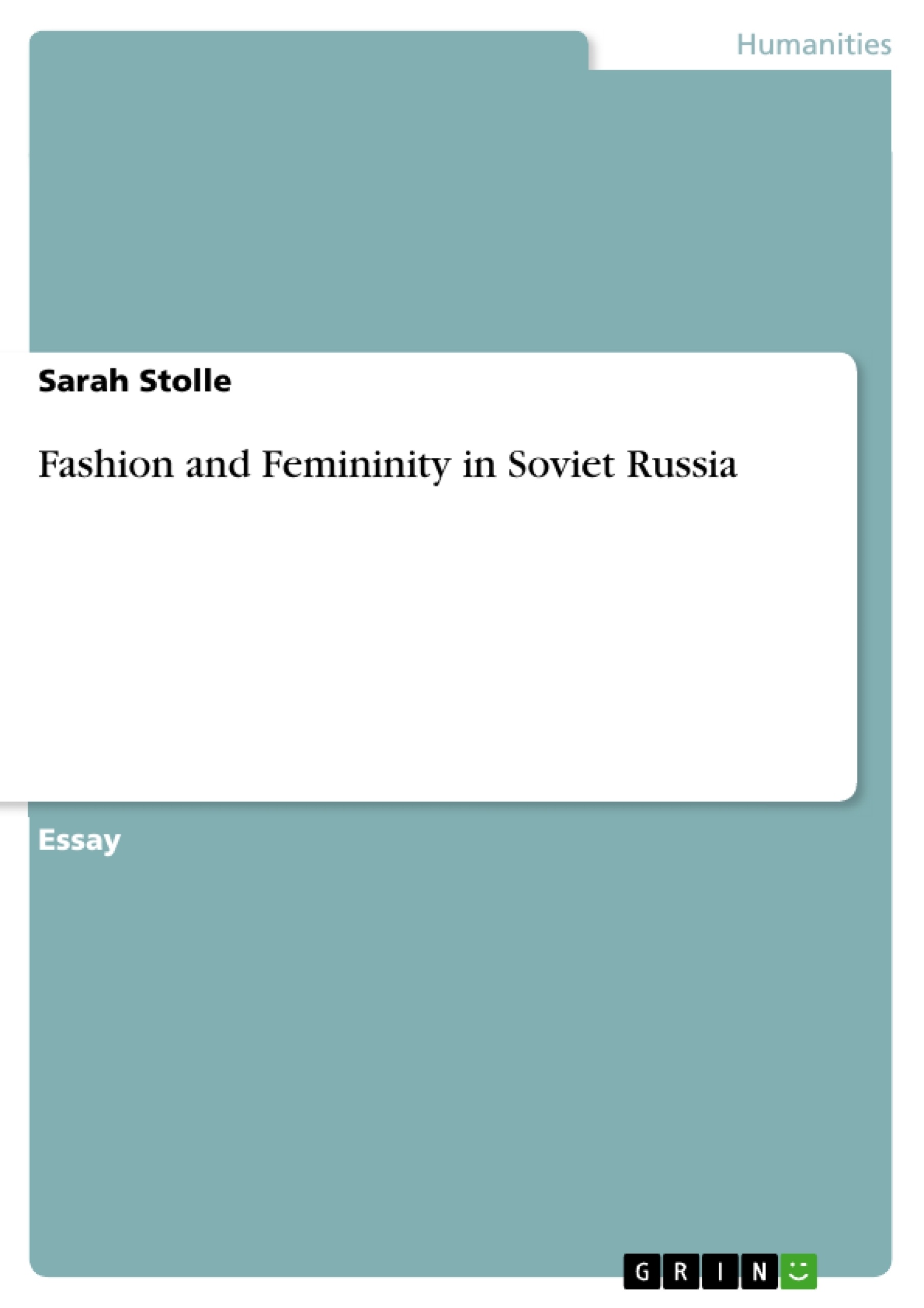“Clothing as one of the most visible forms of consumption, performs a major role in the social construction of identity.” The First and Second Five Year Plan of Stalin, to create out of Russia as soon as possible a fully industrialized economy, brought drastic changes in social life. Women were especially affected by these plans. They could find themselves in a dilemma between how to balance the fact to be a worker and keep in the same way their femininity. These plans offered women rights they never had before, as entering in the workforce. But in the same way it was difficult to keep femininity, especially regarded to fashion. In Soviet Russia Western luxus was seen as the “evil” - women would rather dress as men than wear the latest fashions and risk being considered traitors. In the first line a Soviet woman was an industrial worker and a housewife. Her clothes had to comply with this function - fashion had to be practicable neither than feminine. An important issue about clothes in Soviet times was the fact that they were used by authorities and society to produce and strengthen the collective ideology. One result was social repression of people who did not fit into the collective scheme. The following essay gives an overview of the women fashion in Soviet Russia; how Soviet fashion looked like and what symbols are behind these clothes. But at first I will point out two analysis about body theories; Kathy Davis’ “Embody-ing Theory” and Sandra Lee Bartky: “Foucault, Femininity, and the Modernization of Patriarchal Power”. These theoretical aspects are important to understand the impact of clothing on the society, in our case the impact on women and their femininity in Soviet Russia.
Table of Contents
- Introduction
- Theory
- Kathy Davis: Embody-ing Theory
- Body as a message of Individuality
- Feminism and the Body
- Sandra Lee Bartky: Foucault, Femininity, and the Modernization of Patriarchal Power
- What makes a body feminine?
- Disciplinary Institutions
- Kathy Davis: Embody-ing Theory
- Fashion and Femininity in Soviet Russia
- The Soviet Look
- Symbolic clothes
- Disciplinary Institutions
- The 1980s and 1990s
- The Soviet Look
- Summary
Objectives and Key Themes
This essay aims to examine the role of fashion in shaping femininity in Soviet Russia. It explores how Soviet fashion was influenced by the country's social and political climate, as well as the impact of Western trends. The essay draws on theoretical frameworks from Kathy Davis and Sandra Lee Bartky to analyze the ways in which the body was used to communicate identity and power.
- The impact of the First and Second Five Year Plans on women and their role in society
- The symbolic significance of clothing in Soviet society and its role in promoting collective ideology
- The relationship between femininity, power, and the body as explored by Davis and Bartky
- The influence of Western fashion trends on Soviet fashion and the tensions between Soviet and Western ideals of femininity
Chapter Summaries
The introduction provides an overview of the essay's topic, highlighting the importance of clothing in the social construction of identity. It explores the challenges faced by Soviet women in balancing their roles as workers and maintaining their femininity, particularly in relation to fashion. The chapter also introduces the theoretical frameworks of Kathy Davis and Sandra Lee Bartky, which will be used to analyze the impact of clothing on the society.
The Theory section delves into the work of Kathy Davis and Sandra Lee Bartky, analyzing their perspectives on embodiment and femininity. Davis' "Embody-ing Theory" focuses on the body as a vehicle for individual expression, highlighting the social pressures surrounding body image and the use of the body as a political tool. Bartky's analysis of Foucault's work examines the ways in which femininity is constructed through disciplinary practices, including the ideal feminine body, gendered movements, and the use of makeup and clothing.
The chapter on Fashion and Femininity in Soviet Russia explores the specific characteristics of Soviet fashion, highlighting the symbolic significance of clothing in the Soviet context. It examines the ways in which clothing was used to promote the collective ideology and the tensions between Soviet and Western ideals of femininity.
Keywords
The main keywords and focus topics of this essay include Soviet fashion, femininity, body image, identity, power, social construction, disciplinary practices, Western influence, and theoretical frameworks from Kathy Davis and Sandra Lee Bartky.
- Quote paper
- Sarah Stolle (Author), 2006, Fashion and Femininity in Soviet Russia, Munich, GRIN Verlag, https://www.grin.com/document/60556




